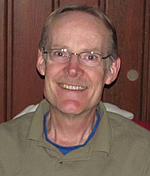Follow-up on PCAST report
By Francis Eberle
Posted on 2010-11-02

NSTA Executive Director Francis Eberle
Thank you all for your great comments on my first blog post!
This is a first for me and I wasn’t sure what the responses would be. There are some great examples of what is going on right now in classrooms. I am going to respond to some of the major points included in your thoughts rather than comment on each one.
To begin, you are right—the PCAST report (PDF) is long. I would highly suggest you read the entire document if you are really interested in policy debates and the process around developing science education policy. But please, certainly read the executive summary and the major recommendations, it is truly interesting reading if you have the time.
The need for more “inspiration” in science education seems to be a foundational issue in many of the comments. Last week during the NSTA regional Conference in Kansas City I heard Dr. Jeff Goldstein, Director of the National Center for Earth and Space Science Education. What a terrific motivational speaker! Dr. Goldstein maintains that we need to instill students with a love for science and make sure they have a conceptual understanding of science at an emotional level. I could not agree more. Inspired students want to learn more. Inspired students want to pursue science (and science education) as a career. Each and every student should have an “a-ha” moment and feel the joy of science. Aren’t these “aha” moments why a lot of us went into teaching?
The Oct. 9–15, 2010, issue of the New Scientist includes a series on “Fifty Ideas That Will Change Science Forever.” This issue is focused on the coming revolution in biology, life and Earth. One of the ideas that are truly revolutionary is artificial photosynthesis. Says New Scientist “Some of the pieces of the jigsaw are already in place. Tiny light-collecting particles can be embedded on a membrane to absorb energy and split carbon dioxide and water molecules. The products are not sugars but carbon-neutral transportation fuels.” Just imagine putting these on cars or planes. How revolutionary is that? This too gives me a sense of wonder about science.
Another issue that came up in your comments was whether the recommendations in PCAST report would actually go anywhere. This remains to be seen. Will there be professional support and training to learn new and enhanced techniques? Will there be the resources to adequately teach science? I agree with your concerns, as do others. Last week Education Week reporter Erik Robelen filed an article that explores how President Obama has brought huge visibility to STEM education over the past year, but he asks whether the Administration is “matching the rhetoric with sufficient commitments in federal policy and spending.” The jury is still out on this too, but I can tell you we are working hard with a lot of key folks in Washington on these issues.
Another reader brought up the equity issue in science education. One was saying the United States needed to be focused on the top students in the sciences, while another commented on how we must include all students. I believe we can’t afford to focus on one group over the other, and we must do both.
I want to close with some thoughts on teacher education and teacher learning. One commenter said that we have to take teacher education seriously. You are absolutely right. There are very good teacher education models, yet many are expensive. Are we as a society ready for that investment? Recently the Association of Public Land Grant Universities (APLU)—the big state universities—launched an Analytical Framework for STEM Teacher Education that describes an effective teacher preparation program for science and mathematics teachers, and provides some very specific examples of effective criteria and processes that should be used in teacher preparation programs.
Teacher learning is also a concern. The National Staff Development Council just released a report about professional development trends in education and found that teachers are reporting experiencing much less in-depth professional development and are spending less time for professional development than four years ago. If we believe that the future of this nation is dependent on the education of our youth, then we have to do a much better job in getting much needed, quality professional development to teachers.
Your thoughts and ideas are welcome.
—Francis
Disclaimer: The views expressed in this blog post are those of the author(s) and do not necessarily reflect the official position of the National Science Teaching Association (NSTA).


